The document discusses the evolution and complexity of leadership concepts, emphasizing the lack of a universal definition and the diverse theoretical approaches to understanding leadership's nature. It contrasts trait-based and process-oriented views, suggesting that leadership is a dynamic interplay between leaders and followers aimed at achieving common goals. The text highlights how leadership is perceived through various lenses, including influence, group dynamics, and the ethical responsibilities of leaders towards their followers.
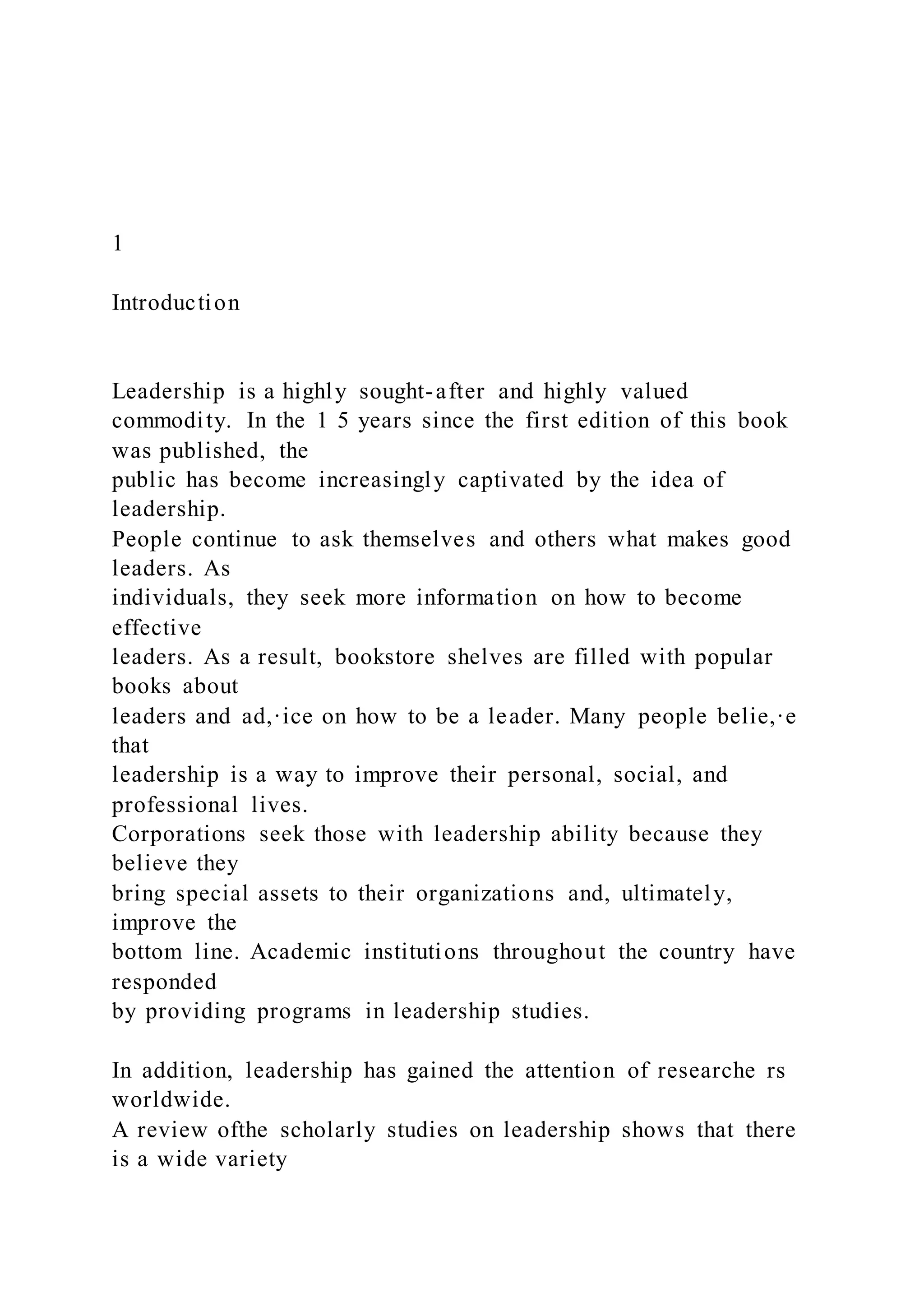
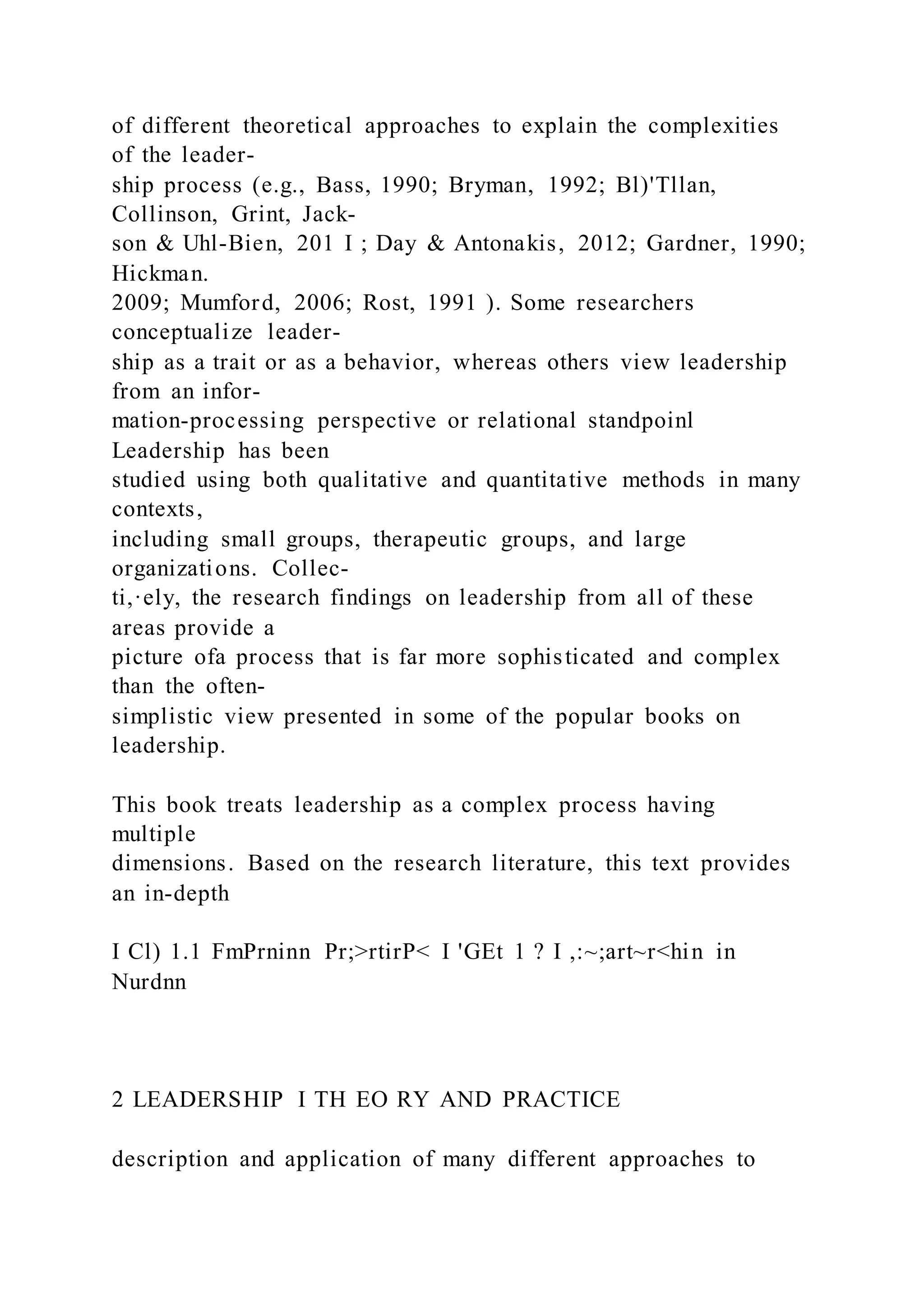
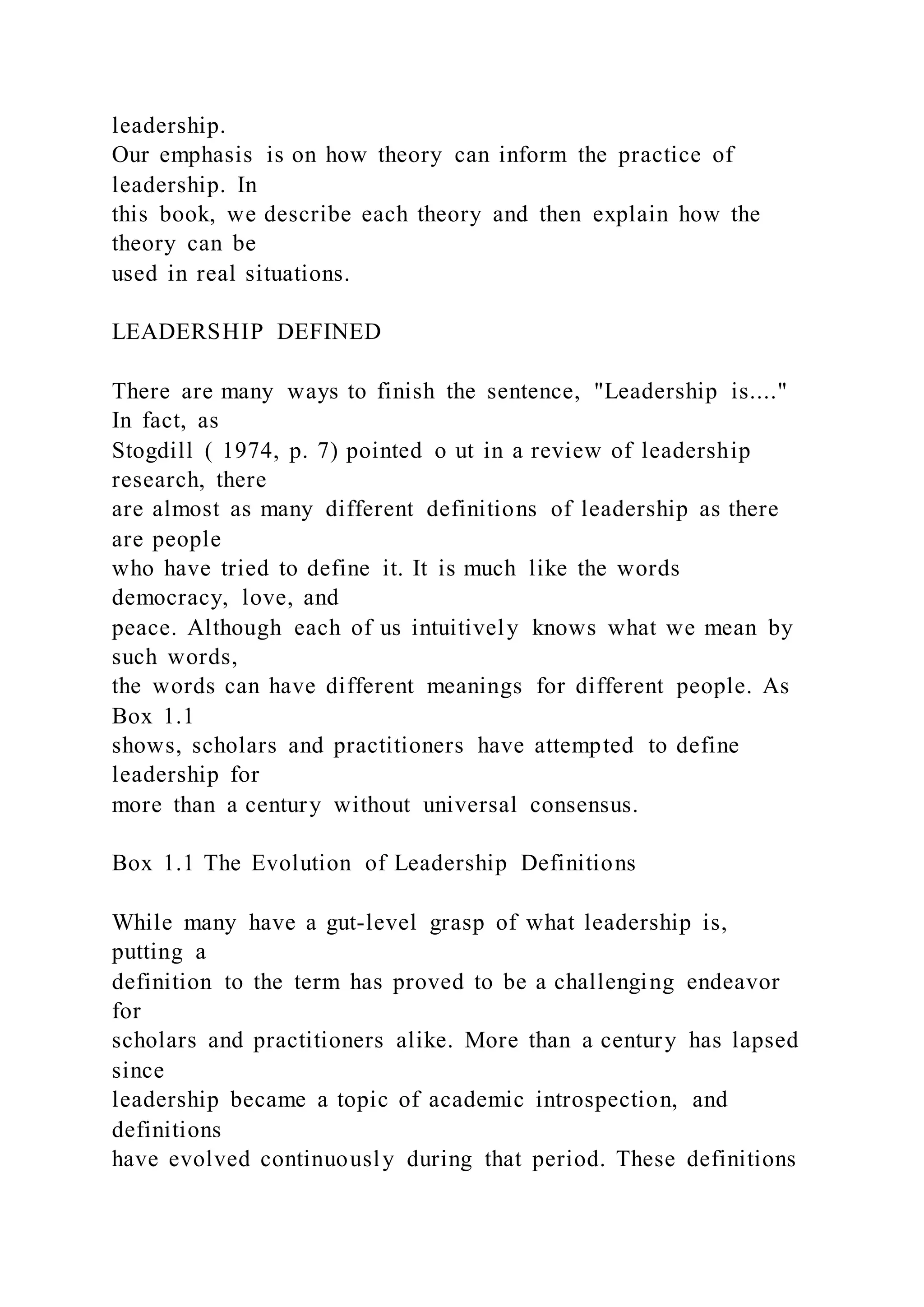

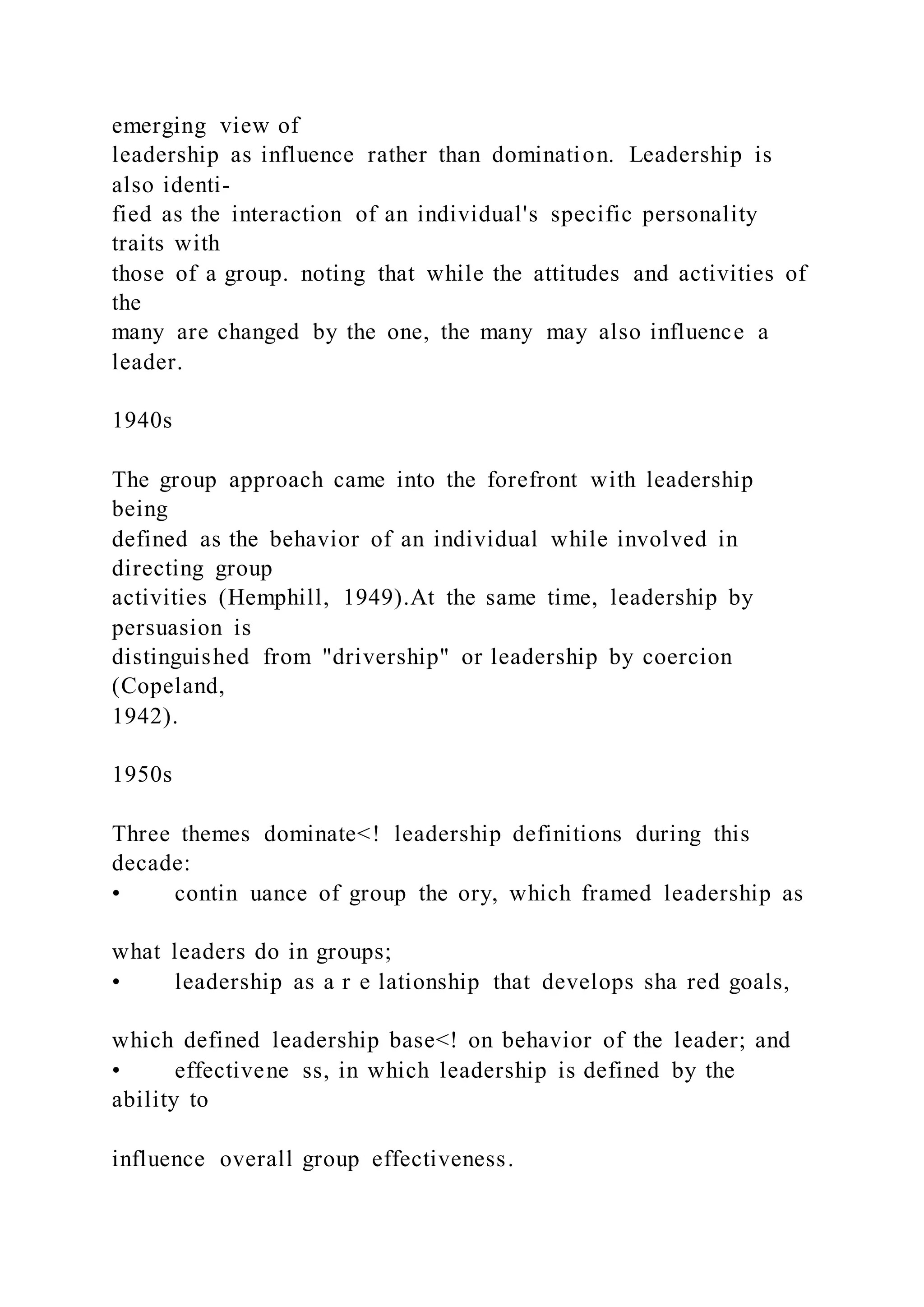
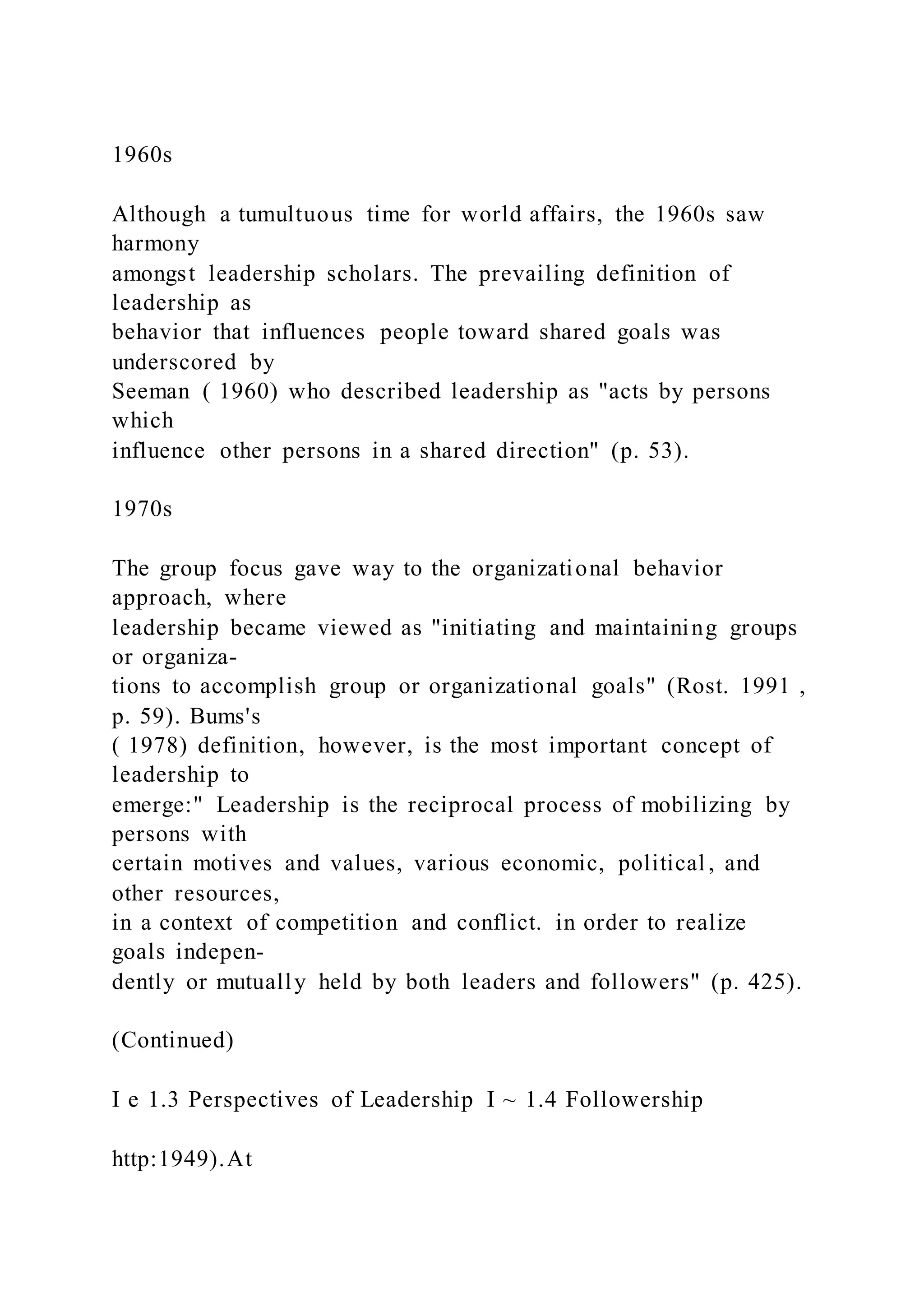
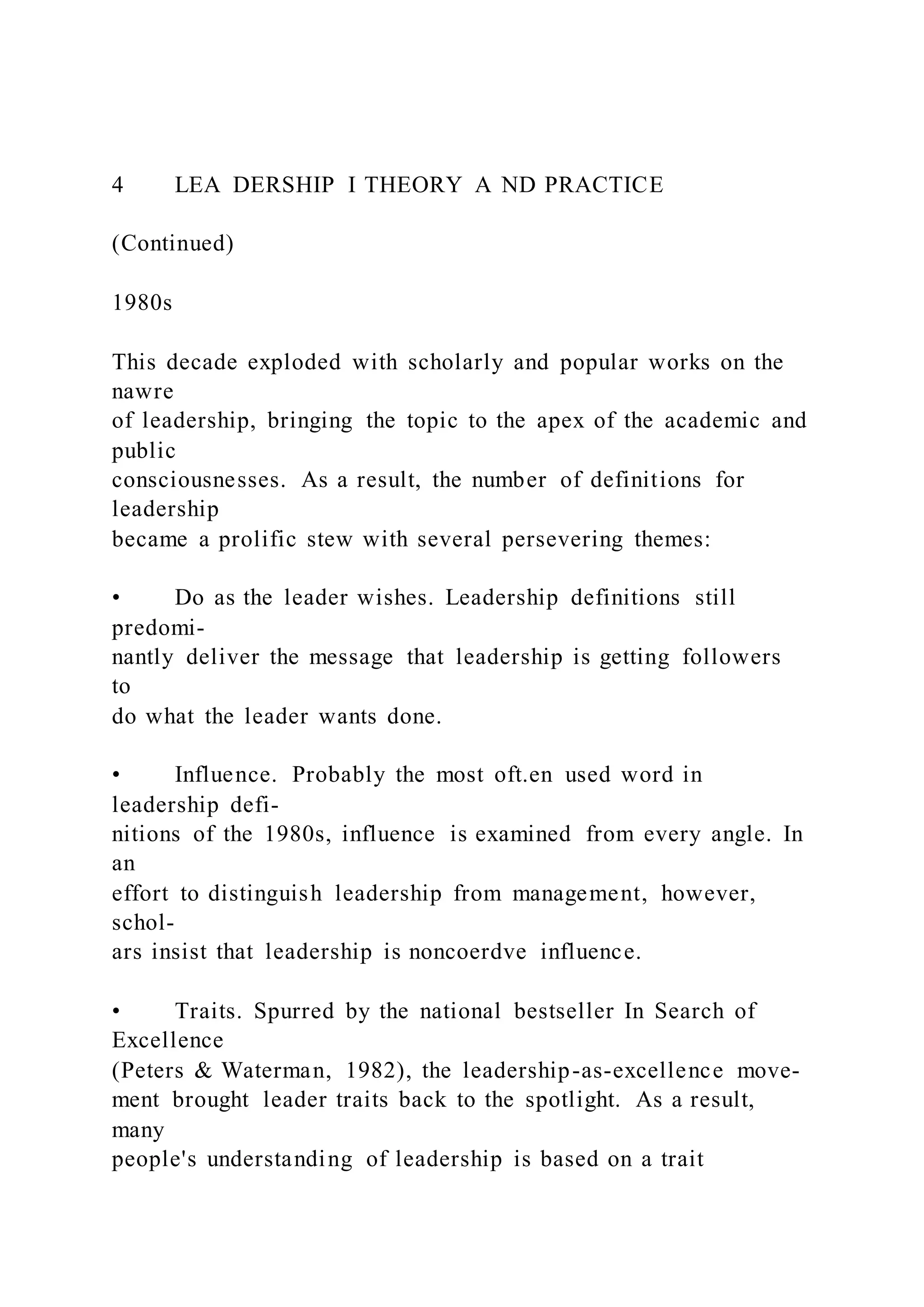

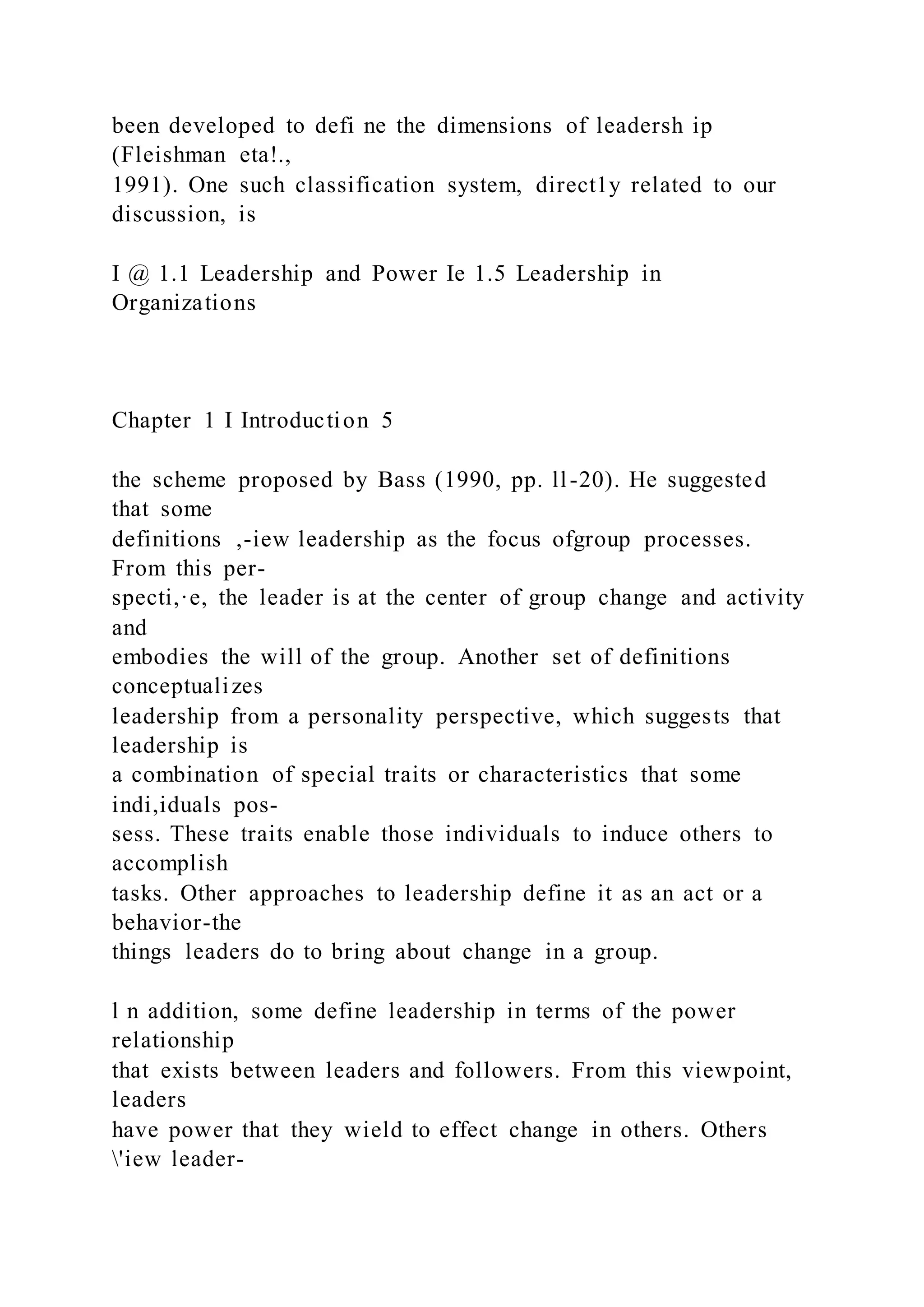

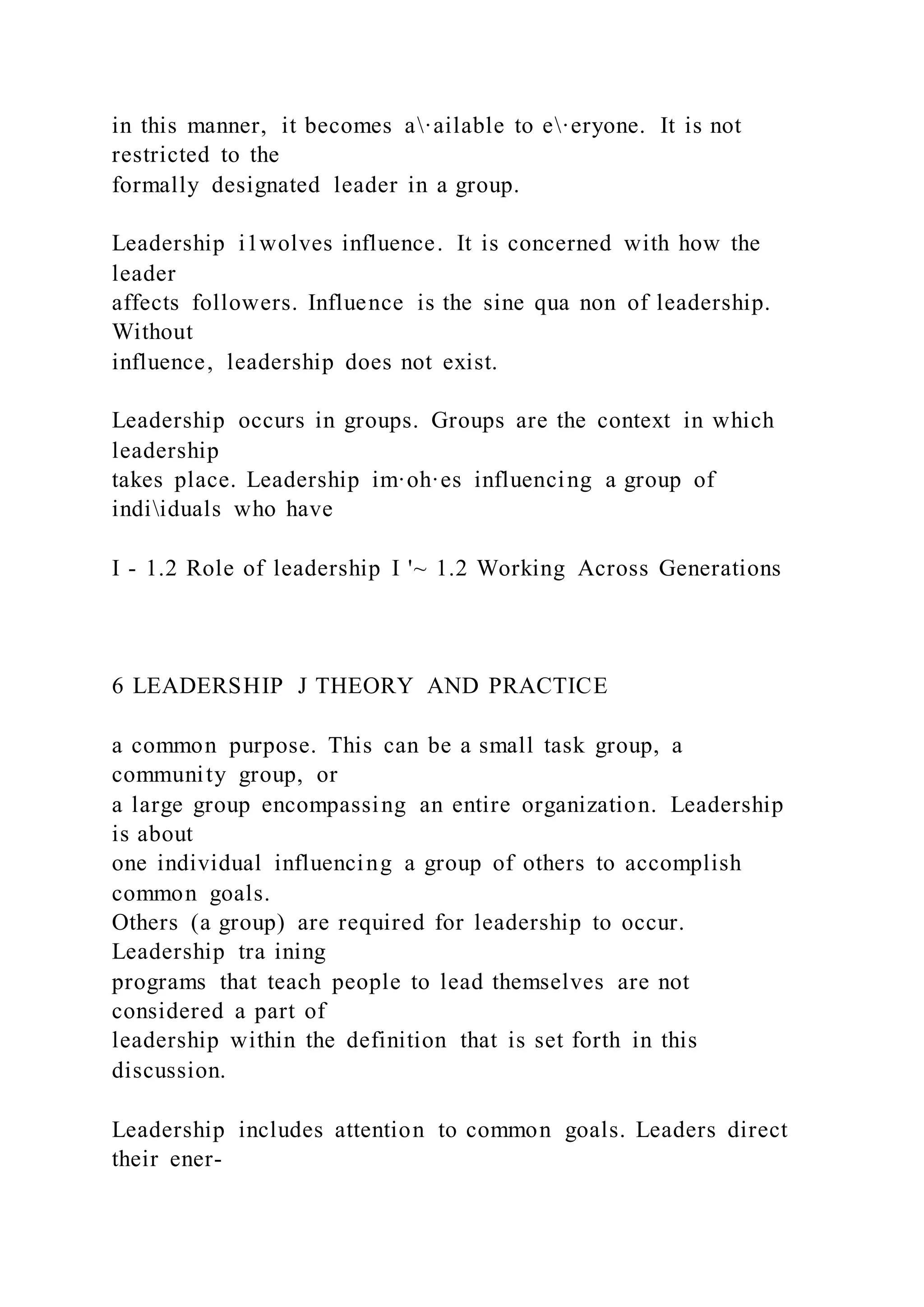
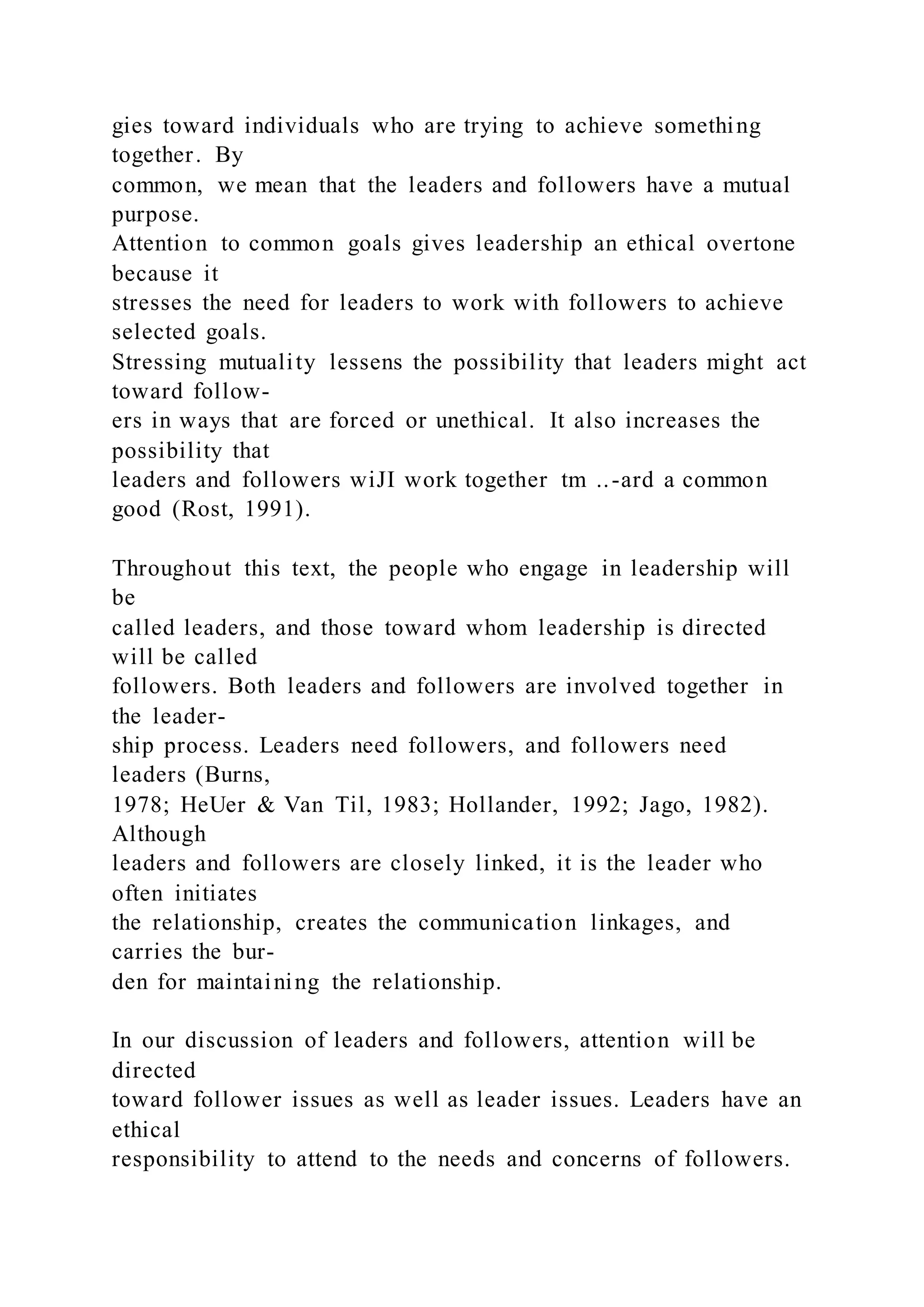

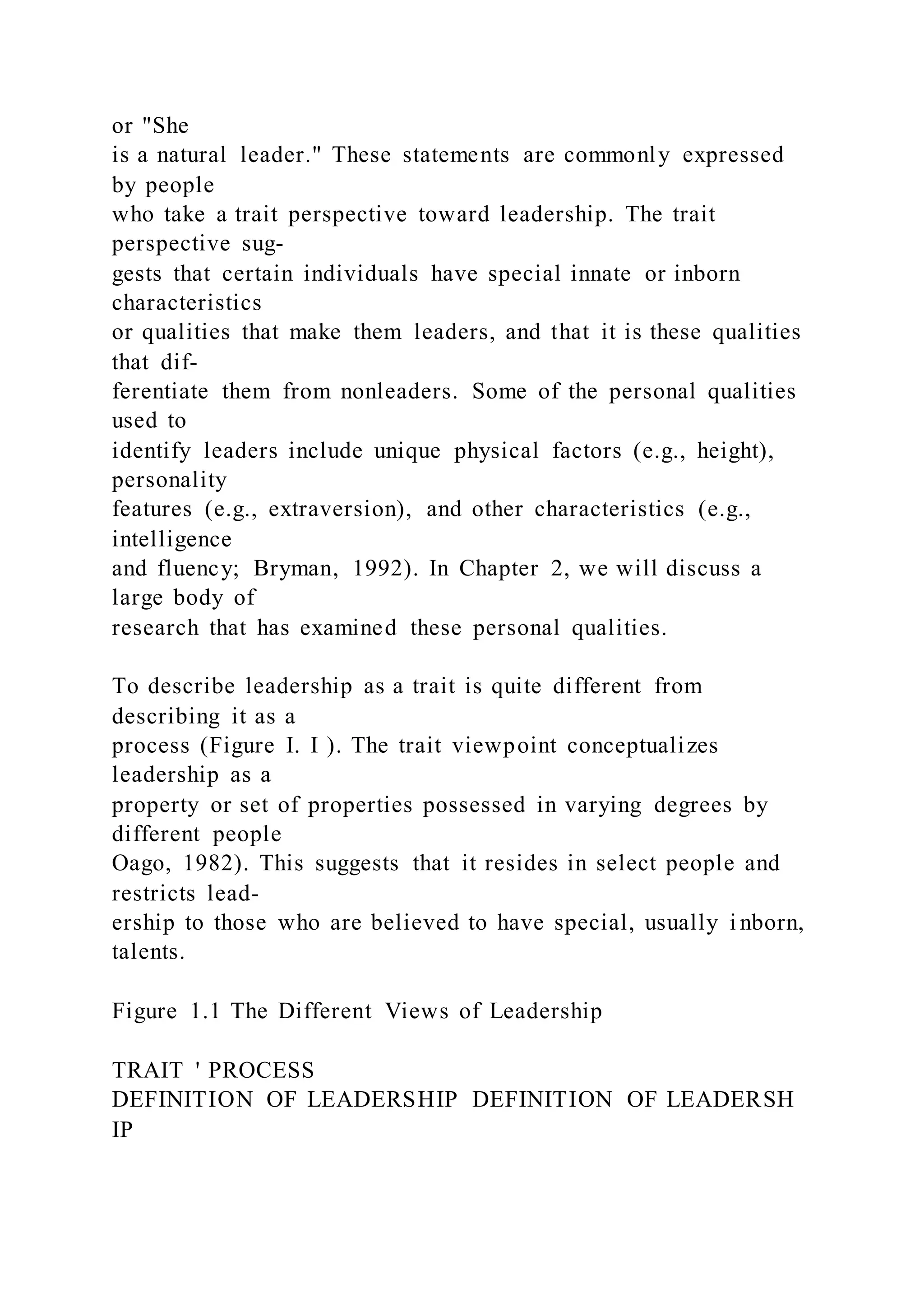

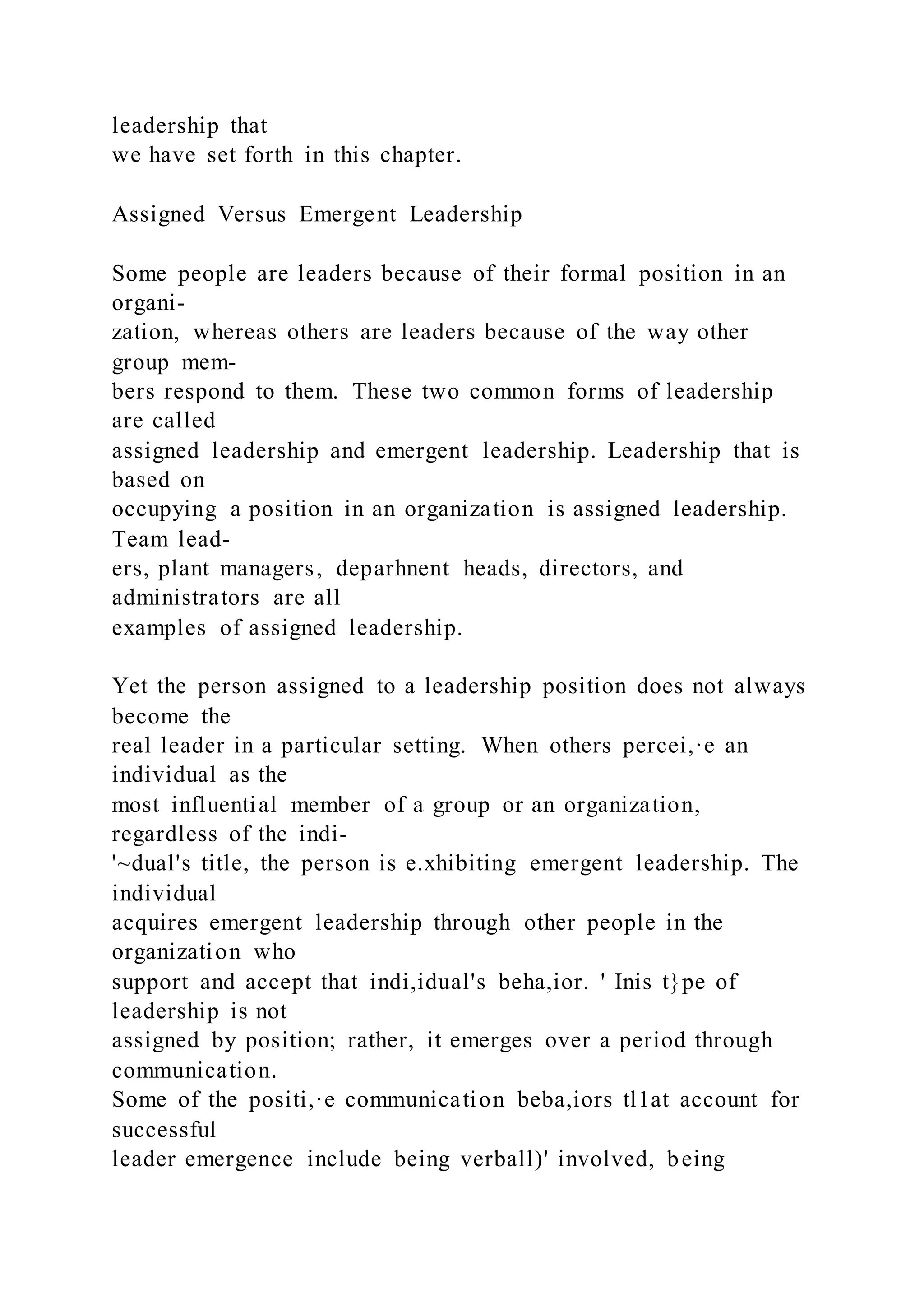
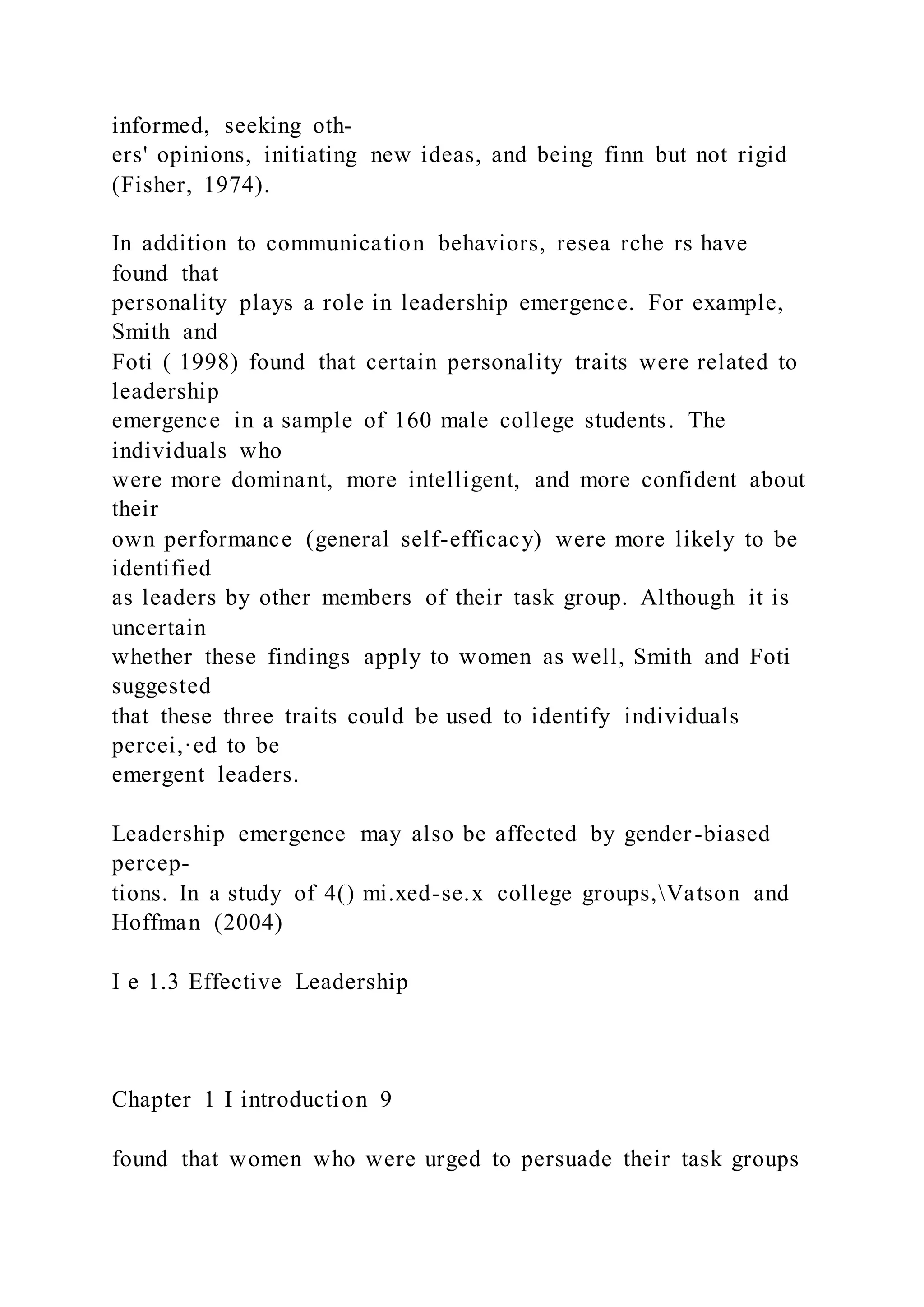
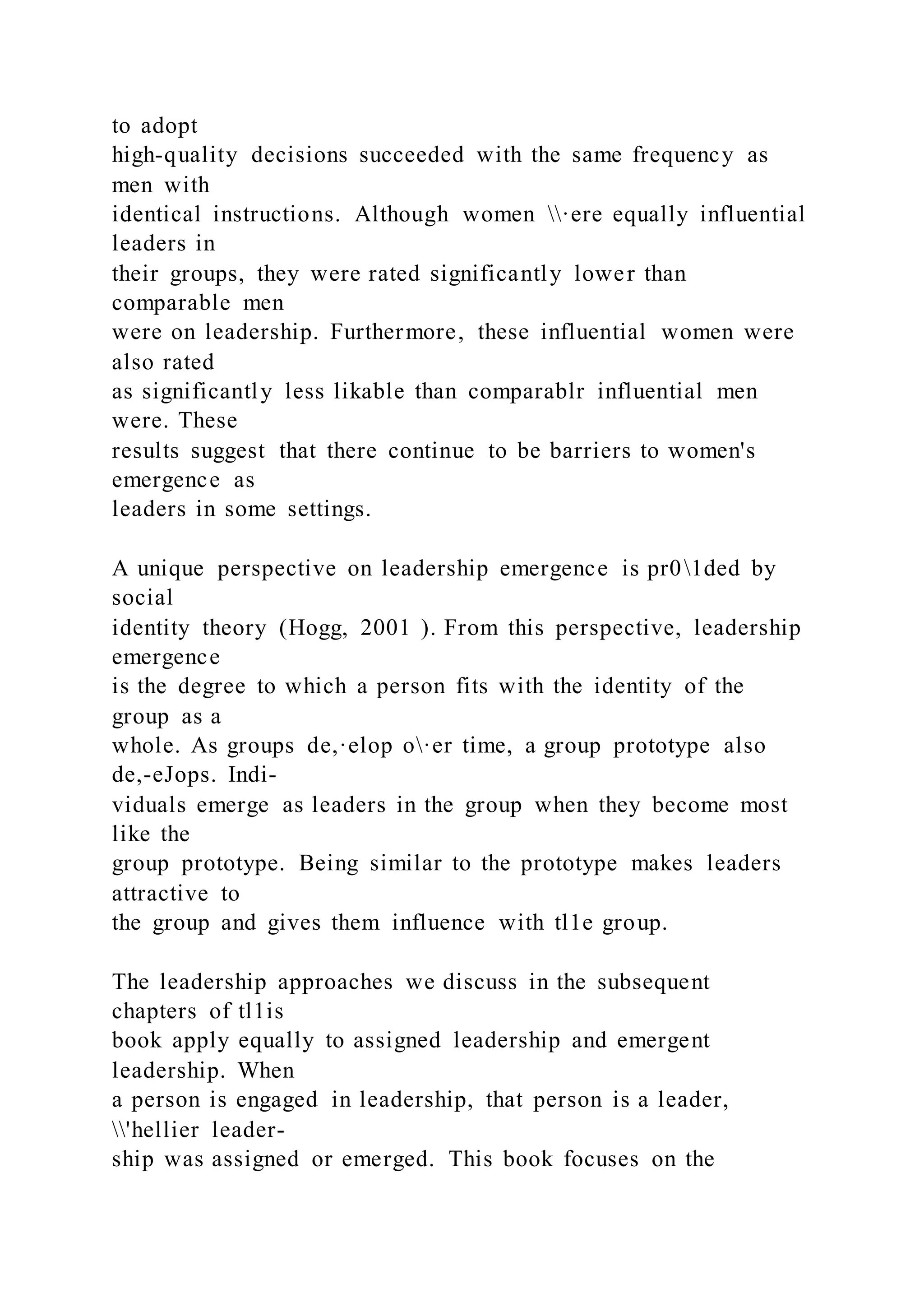
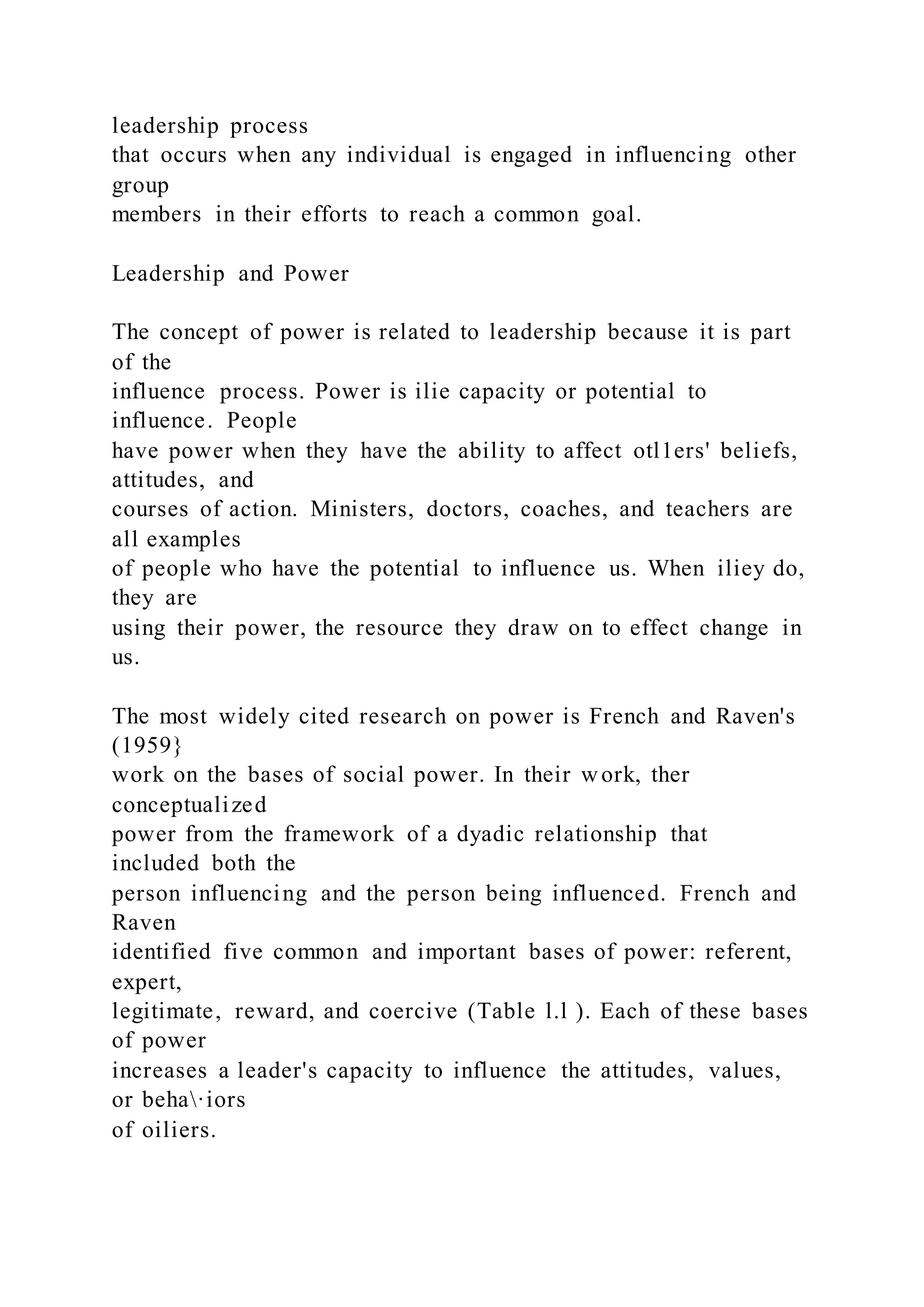
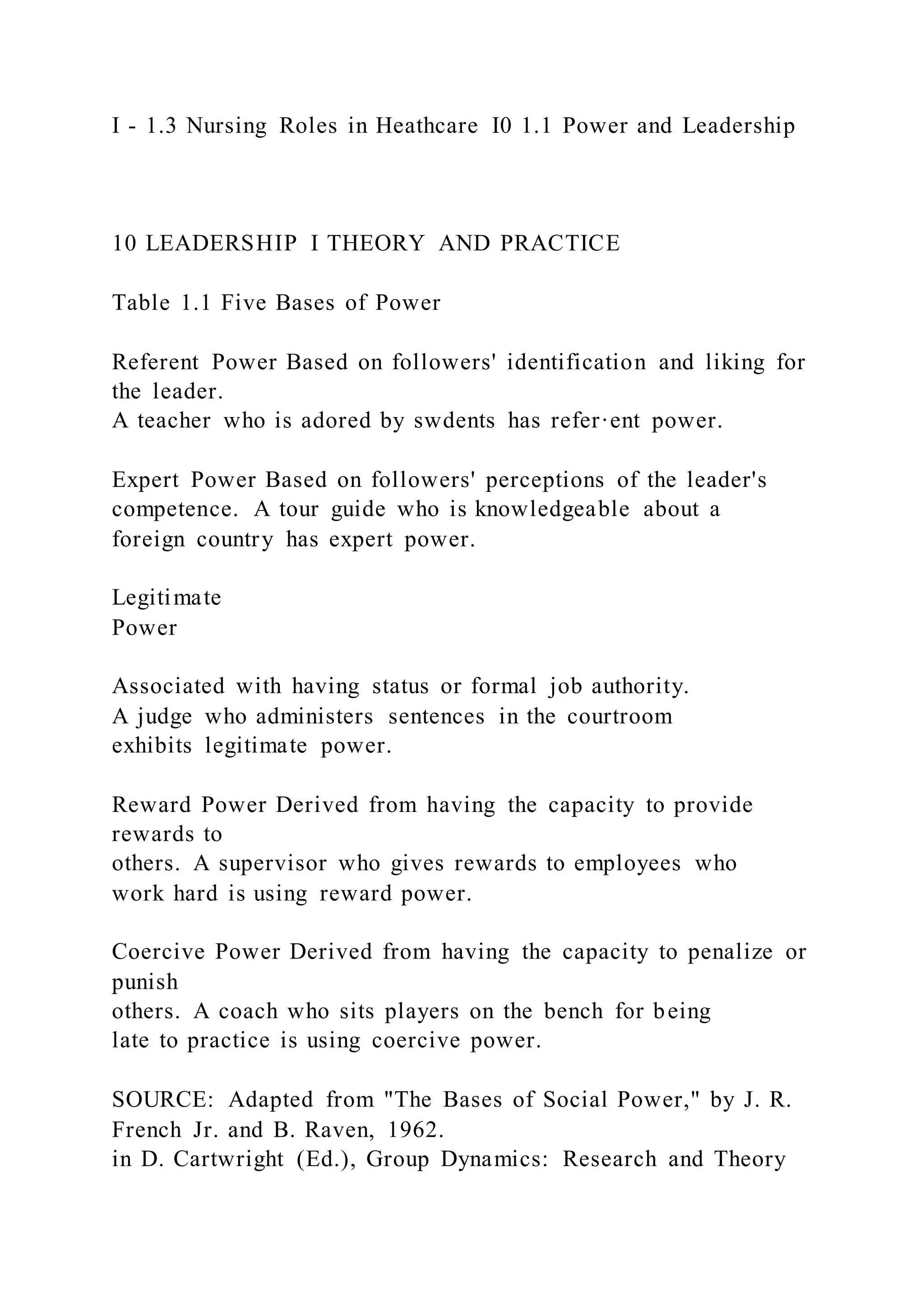
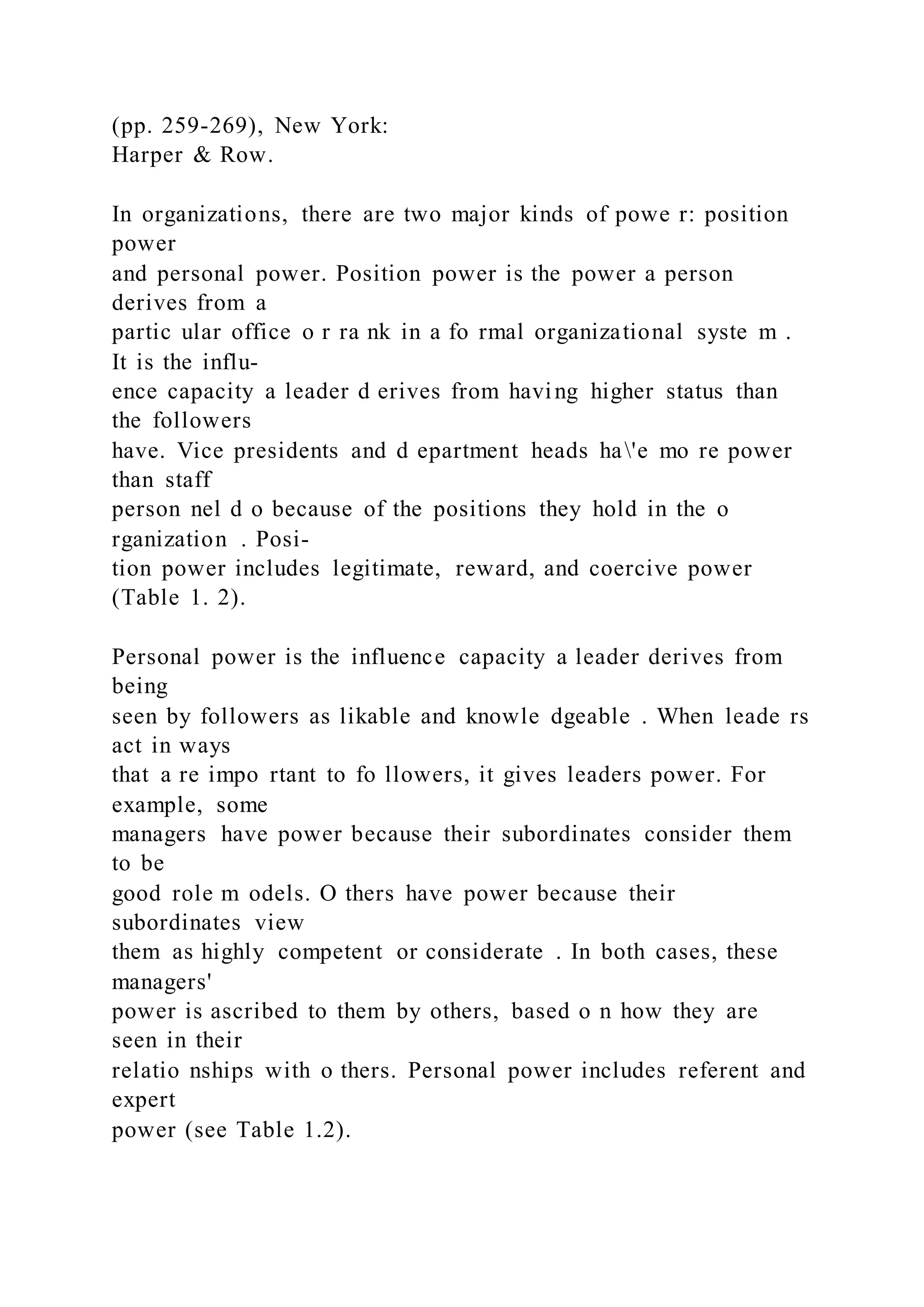
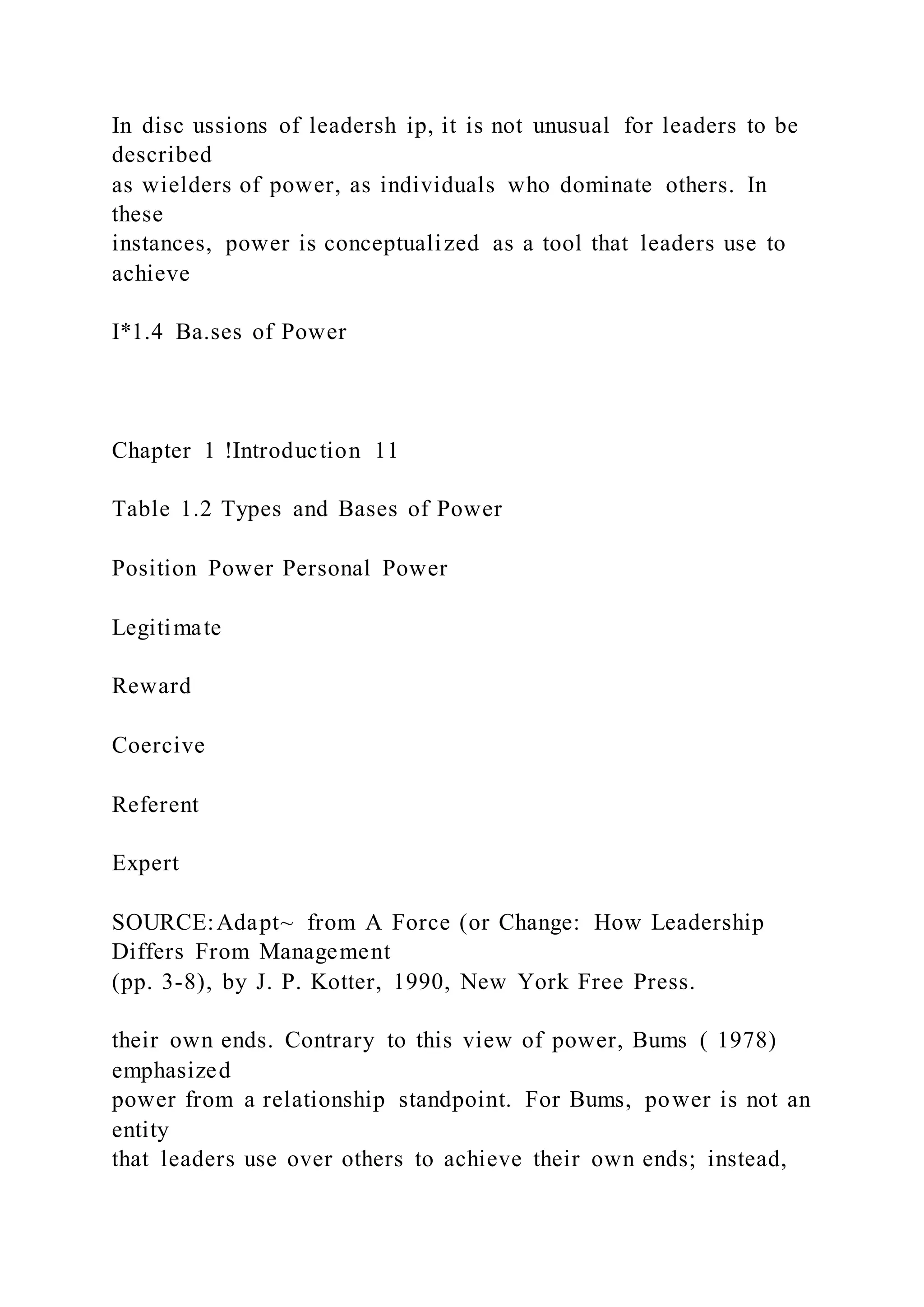
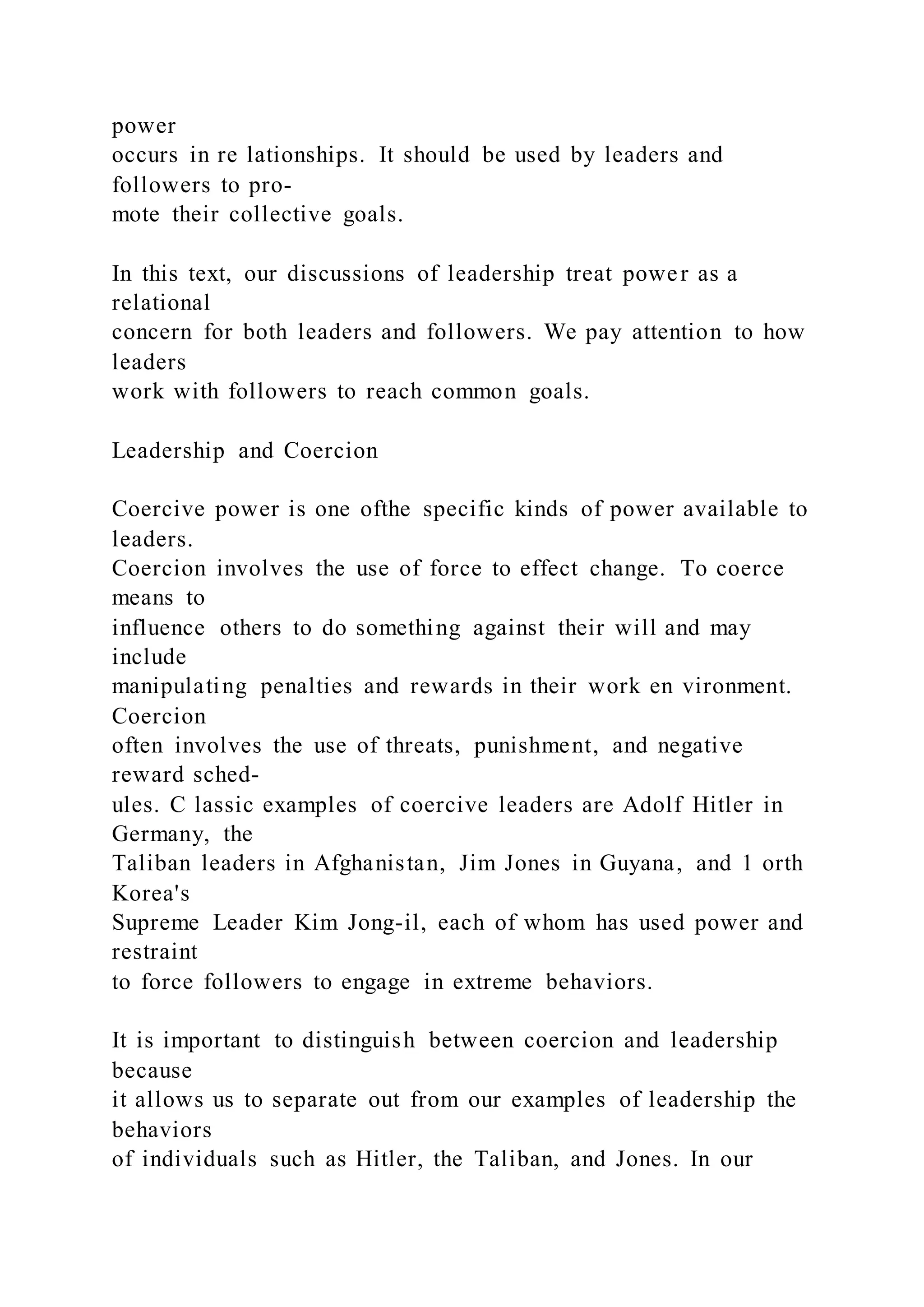
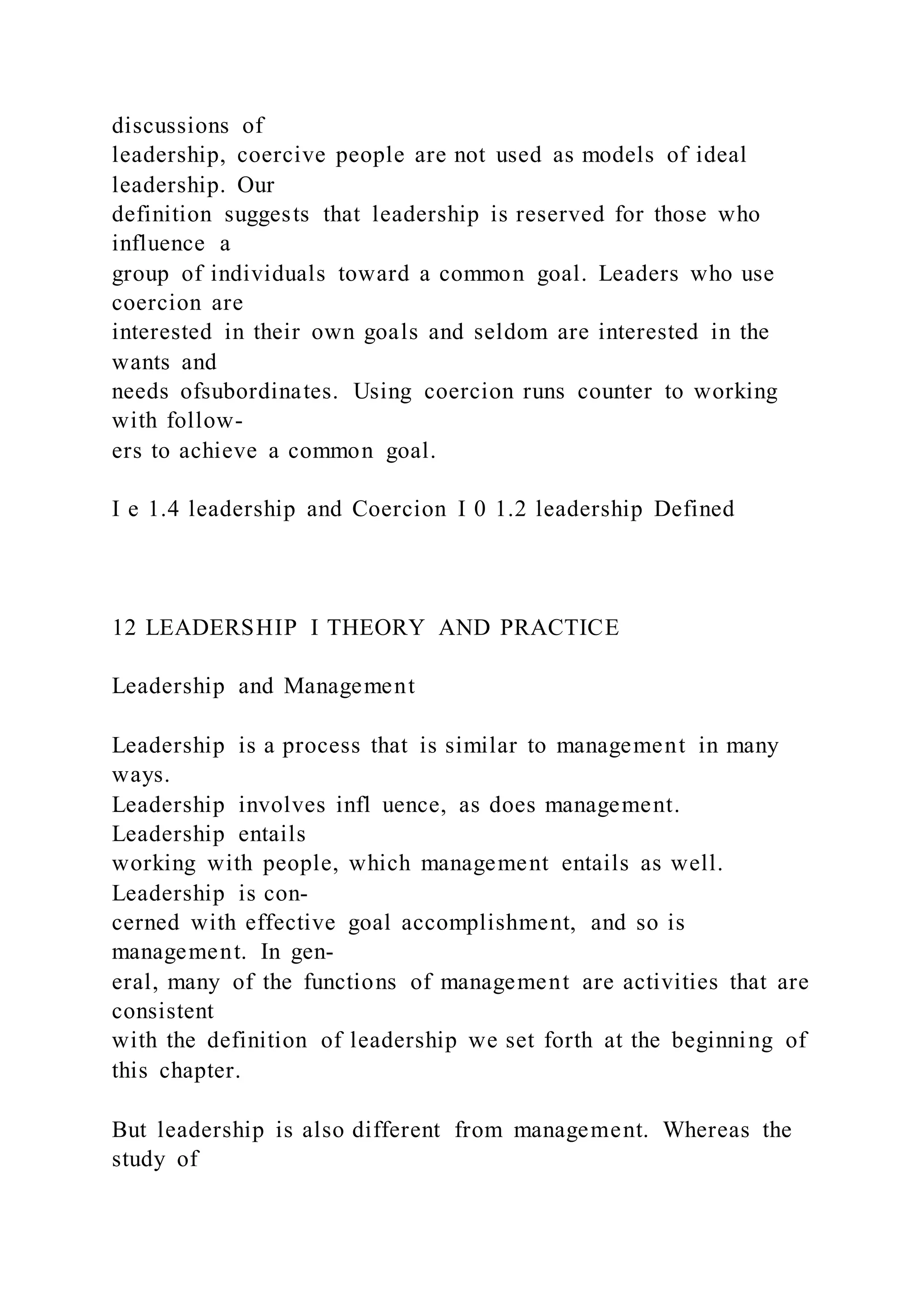
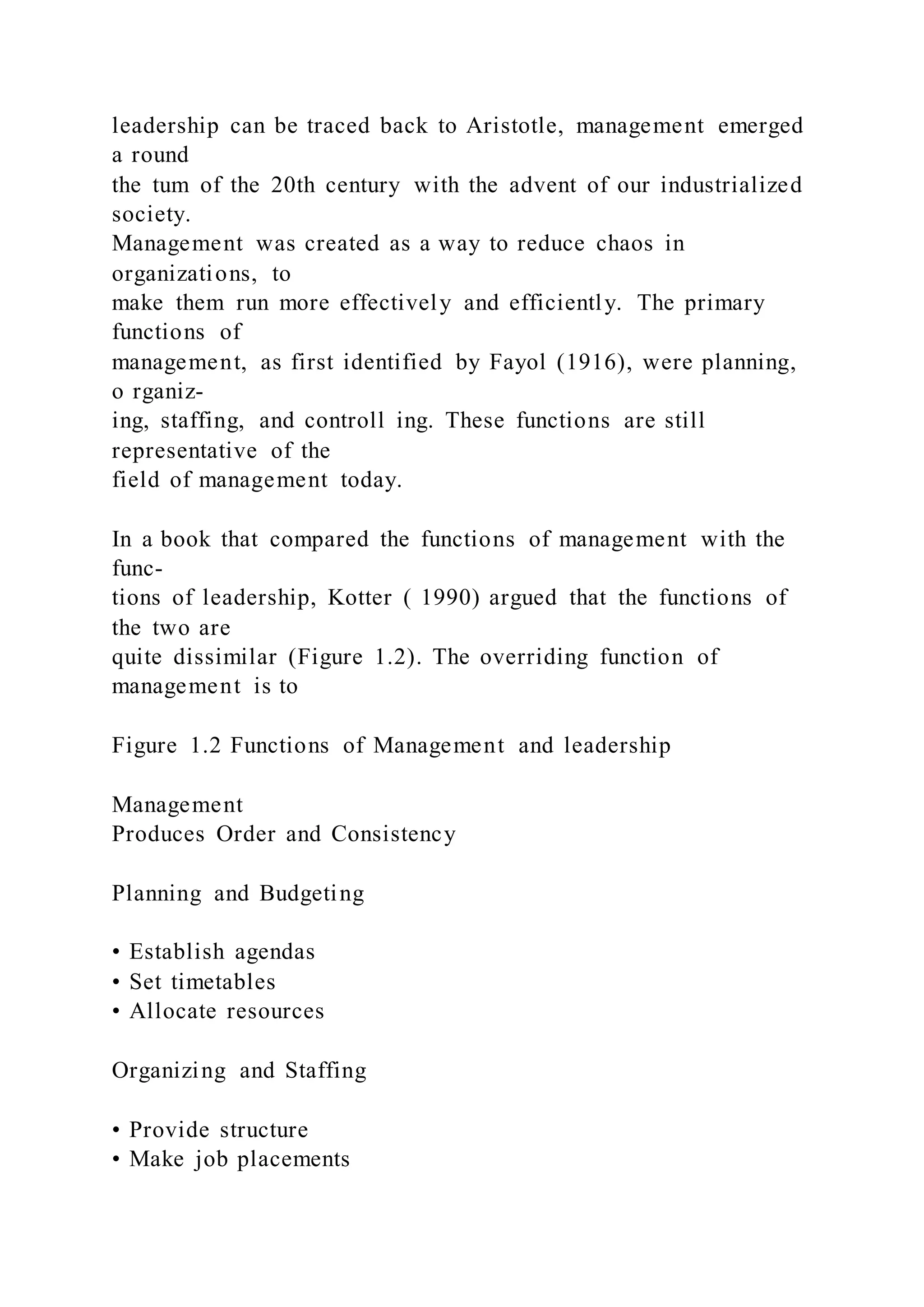

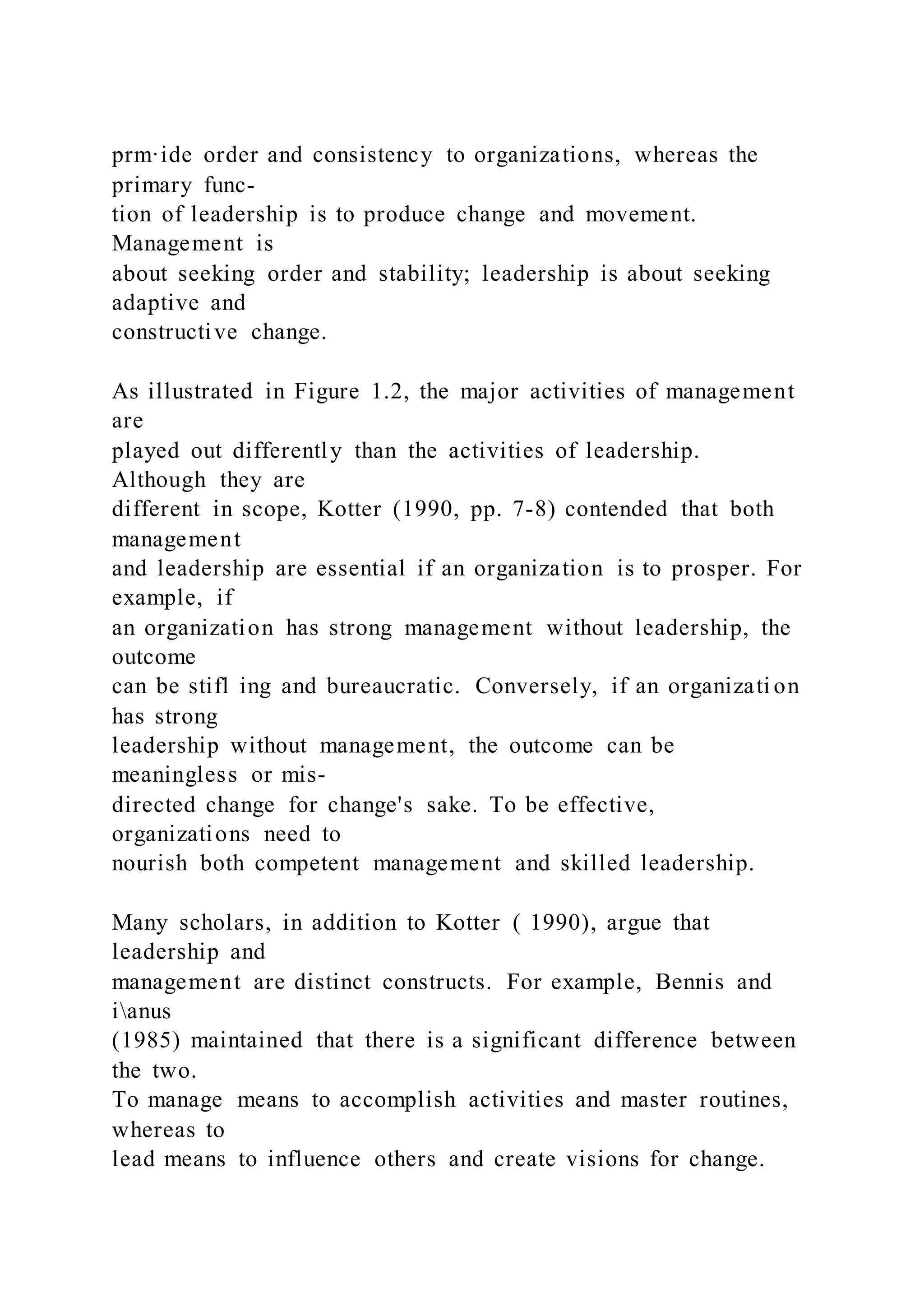
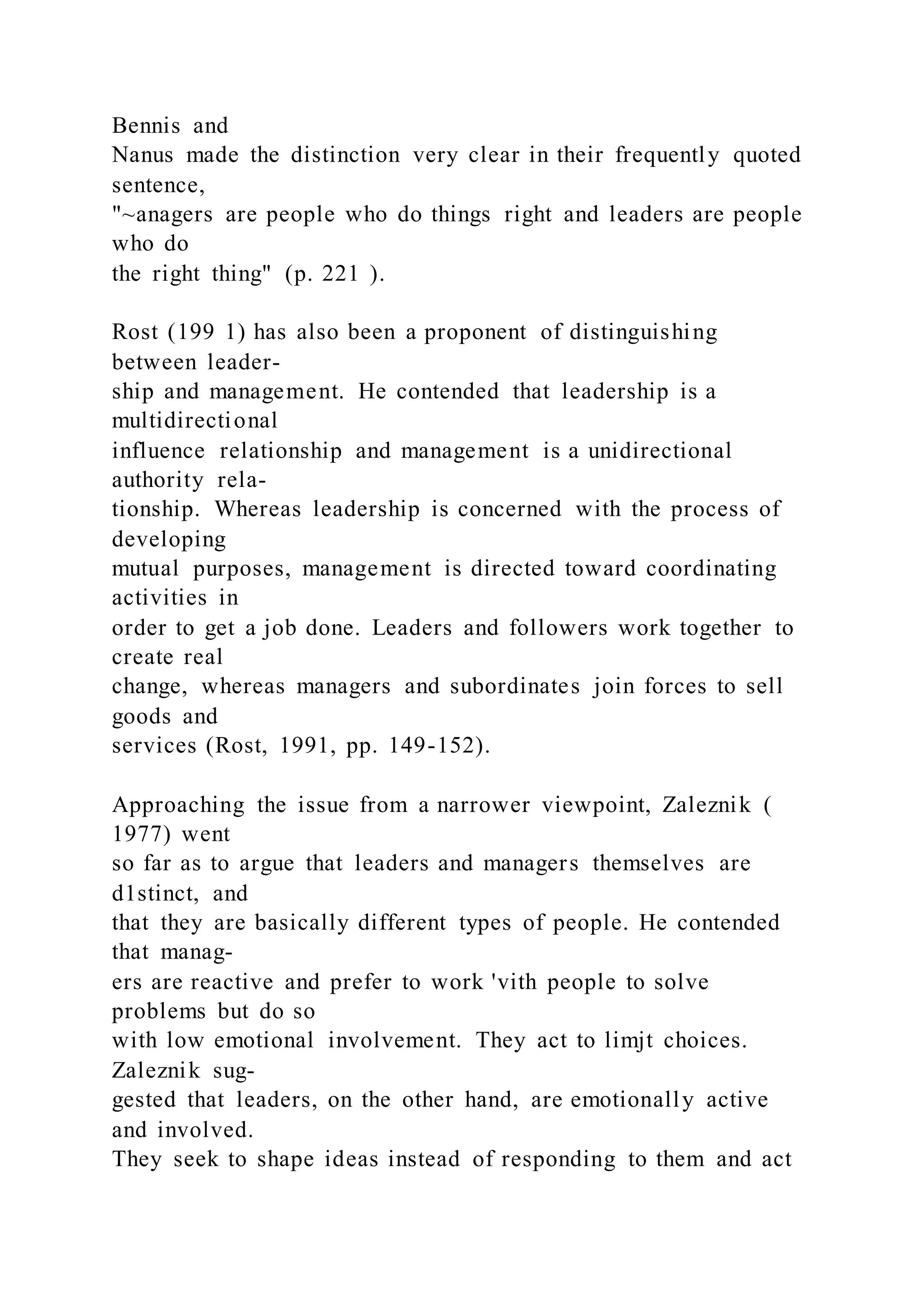
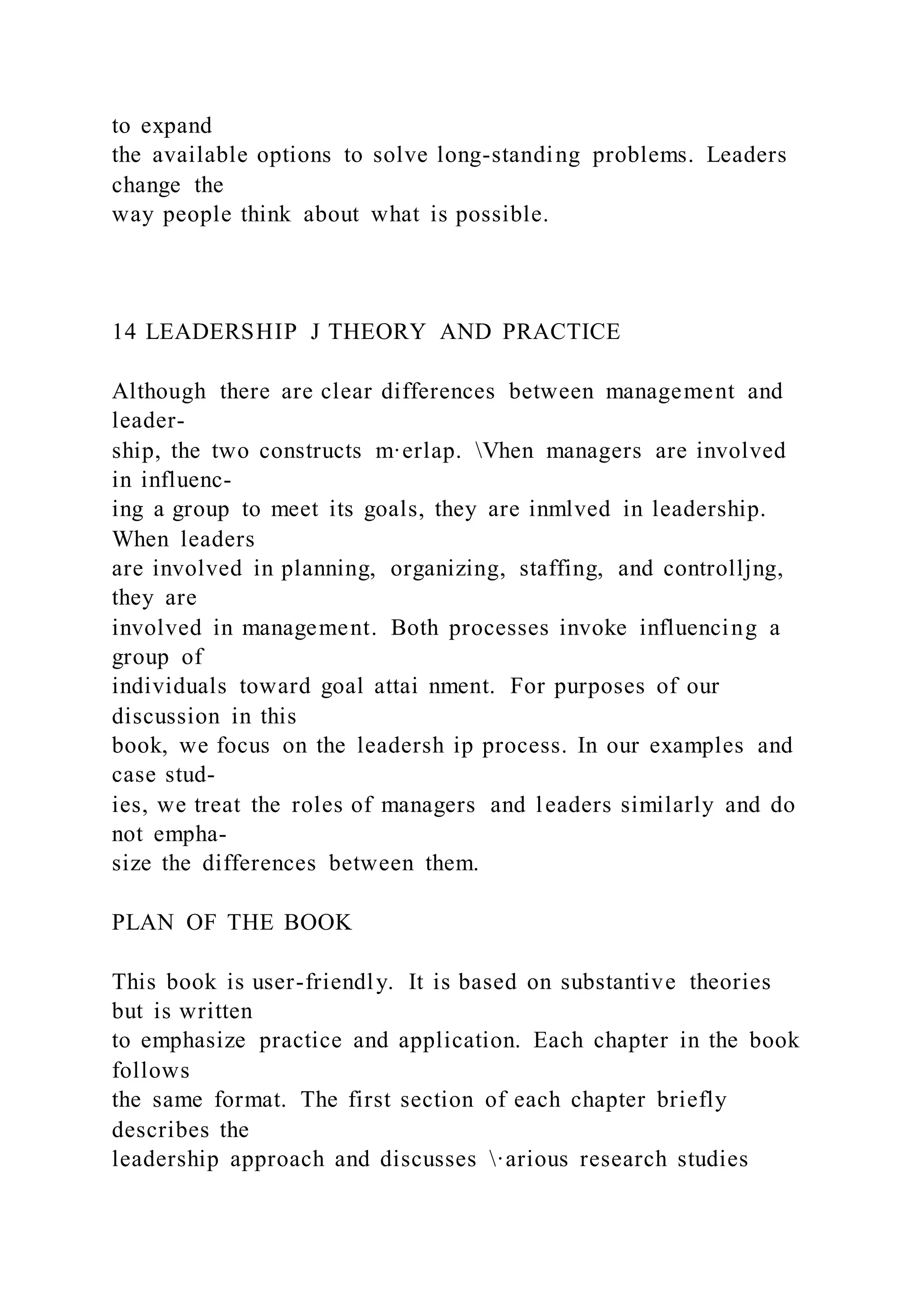
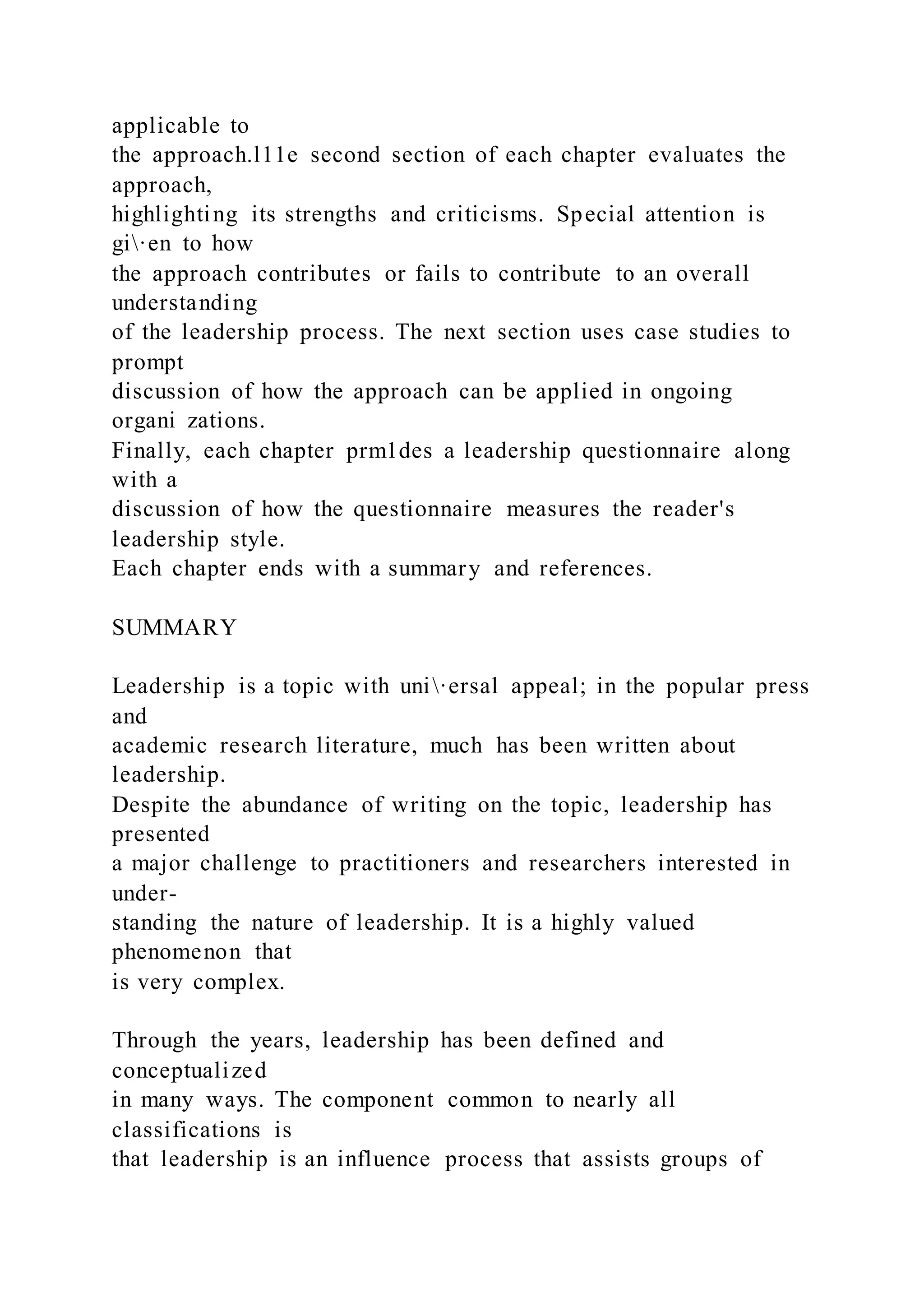
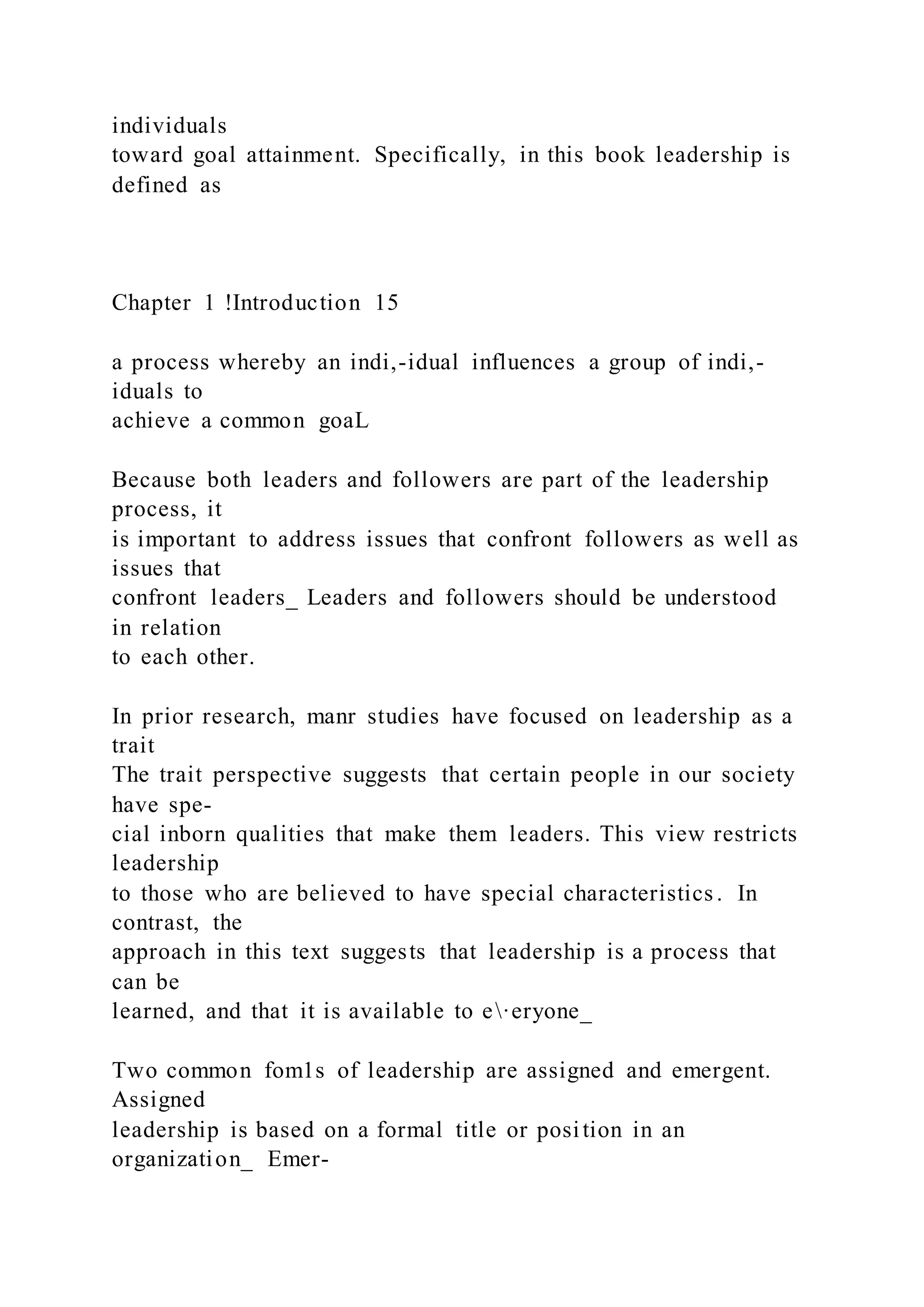
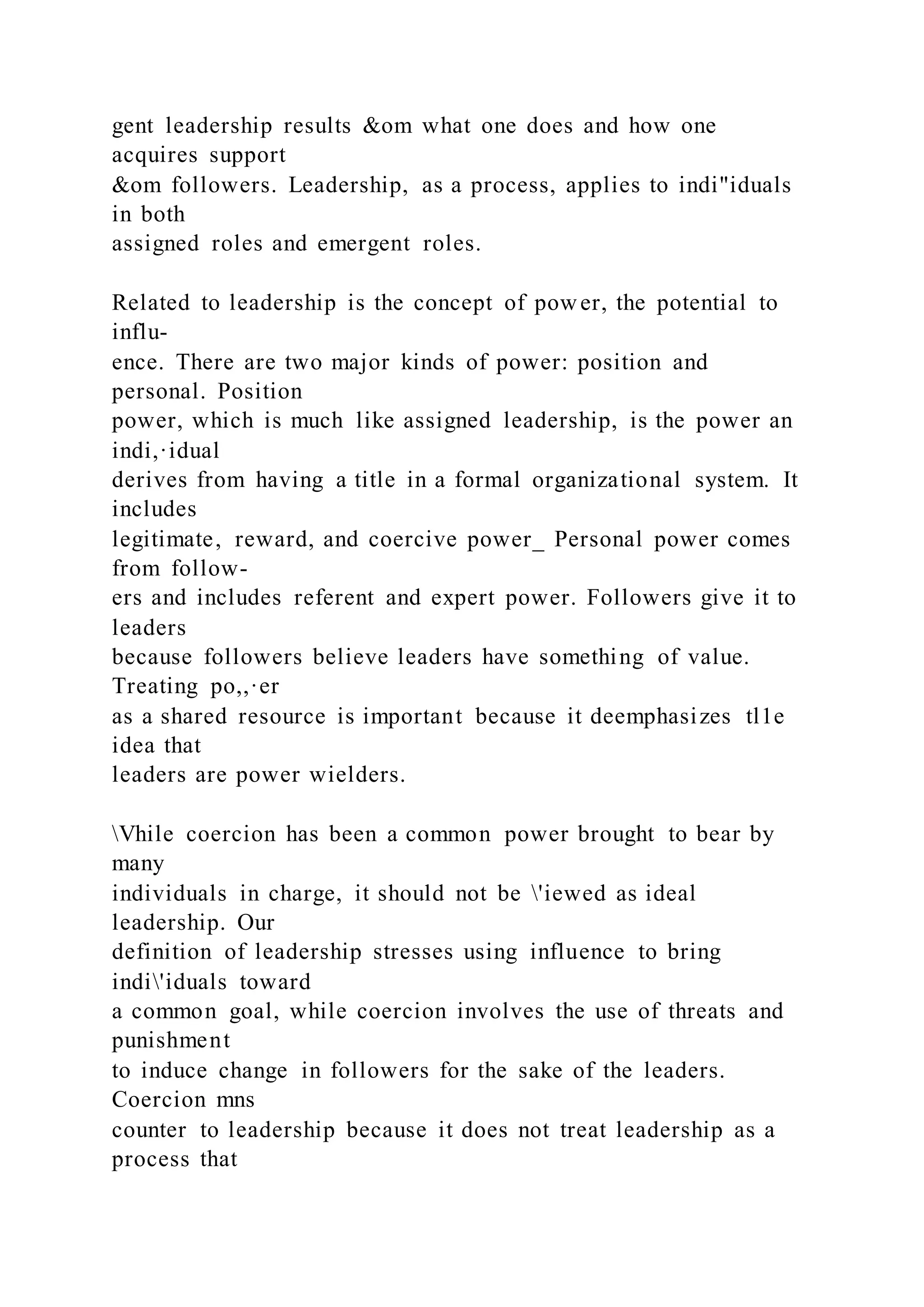
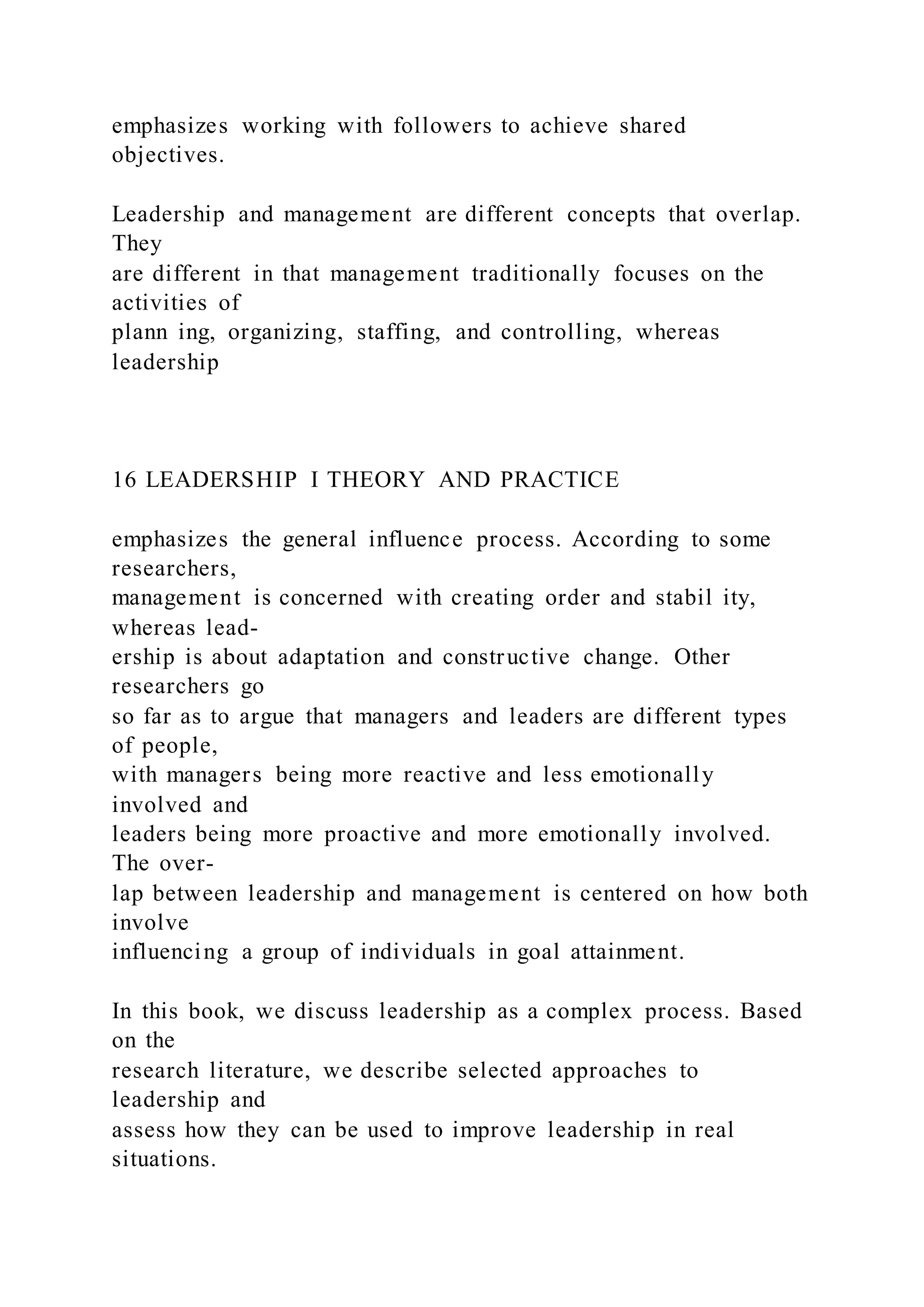
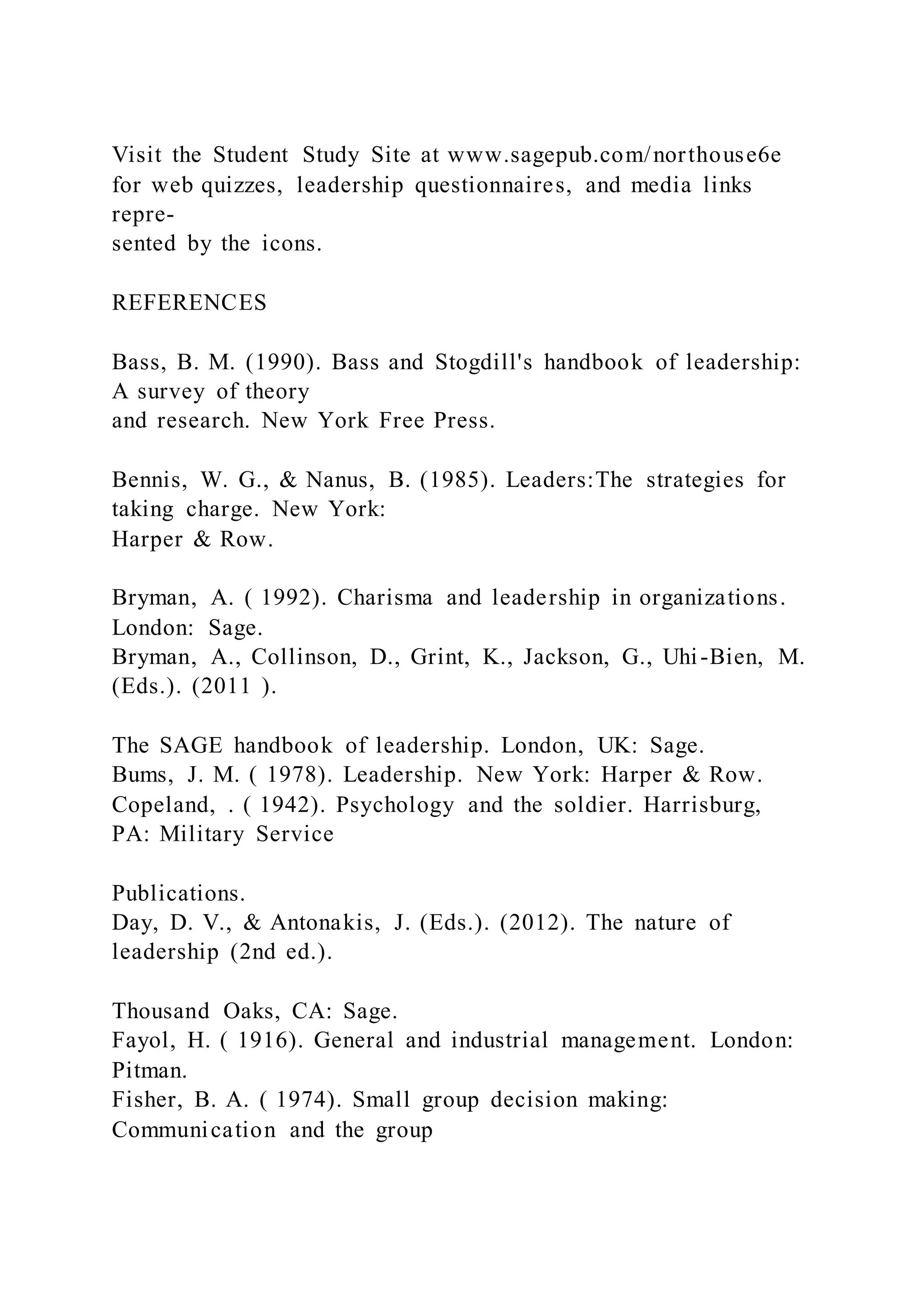
![process. New York: McGraw-Hill.
Fleishman, E. A., Mumford, :11. D., Zaccaro, S. J., Levin, K.
Y., Korotkin, A. L., &
Hein, M. B. (1991 ). Taxonomic efforts in the descripti on of
leader behavior: A
synthesis and functional interpretation. Leadership Quarterly,
2(4), 245-287.
French, J. R., Jr., & Raven, B. (1959). The bases of social
power. In D. Cartwright
(Ed.), Studies in social power {pp. 259-269). Ann Arbor, Ml:
Institute for Social
Research.
Gardner, j . W. ( 1990). On leadership. New York: Free Press.
www.sagepub.com/northouse6e
Chapter 1 !Introduction 17
Heller, T., & Van Til, ]. ( 1983). Leadership and followership:
Some summary
propositions. Journal ofApplied Behavioral Science, 18, 405-
414.
Hemphill,] . K. (1949). Situational factors in leadership.
Columbus: Ohio State
University, Bureau of Educational Research.
Hickman, C. R. (Ed.). (2009). Leading organizations:
Perspectives for a new era
(2nd ed.). Thousand Oaks, CA: Sage.
Hogg. M.A. (2001 ). A social identity theory of leadership.](https://image.slidesharecdn.com/1introductionleadershipisahighlysought-aftera-220920054236-c617214d/75/1-Introduction-Leadership-is-a-highly-sought-after-a-35-2048.jpg)
![Personality and Social
Psychology Review, 5, 184-200.
Hollander, E. P. (1992). Leadership, followership, self, and
others. Leadership
Quarterly, 3(1), 43-54.
Jago, A. C . ( 1982). Leadership: Perspectives in theory and
research. Management
Science, 28(3), 315-336.
Kotter, J. P. ( 1990). A force for change: How leadership differs
from management.
ew York: Free Press.
Moore, B. V. ( 1927). The May conference on leadership.
Personnel Journal, 6,
124-128.
Mumford, M. D. (2006). Pathways to outstanding leadership: A
comparative
analysis of charismatic, ideologica~ and pragmatic leaders.
Mah''-'ah, NJ:
Lawrence Erlbaum.
Peters, T. ]., & Waterman, R. H. (1982). In search of
excellence: Lessons from
America's best-run companies. New York: Warner Books.
Rost, ]. C. (1991 ). Leadership for the twenty-first century. New
York: Praeger.
Seeman, M. ( 1960). Social status and leadership. Columbus:
Ohio State
University, Bureau of Educational Research.
Smith, J. A., & Foti , R. ]. (1998). A pattern approach to the](https://image.slidesharecdn.com/1introductionleadershipisahighlysought-aftera-220920054236-c617214d/75/1-Introduction-Leadership-is-a-highly-sought-after-a-36-2048.jpg)
